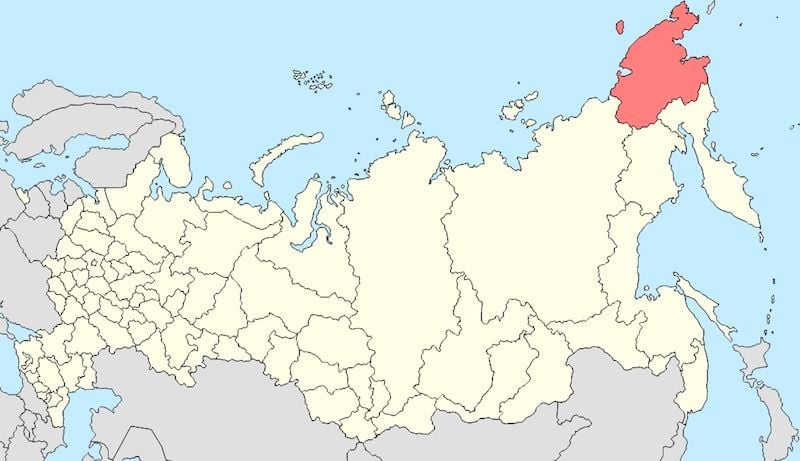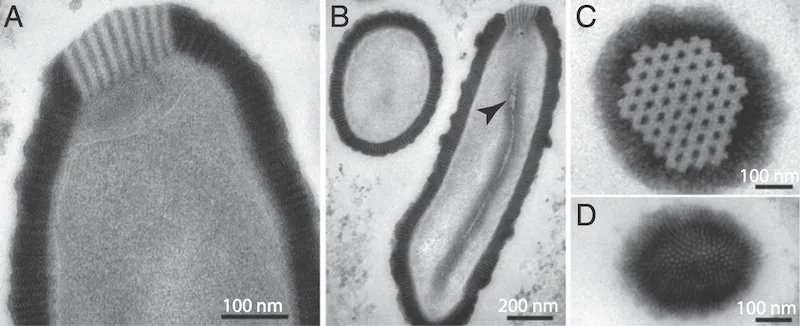The World’s Largest Virus Was Just Resurrected From 34,000-Year-Old Permafrost
It’s not a threat to humans, but does show that ancient viruses can persist for millennia and remain a potential health threat
/https://tf-cmsv2-smithsonianmag-media.s3.amazonaws.com/filer/8b/f2/8bf2e2d2-d5a1-46c5-a558-162d576569f3/virus_1.jpg)
Deep within the Siberian permafrost, nearly 100 feet underneath the frozen ground, it sat dormant, for centuries and centuries. Above ground, the glaciers receded, ancient humans arrived, and eventually, civilization developed.
Now, it's been thawed and revived, thanks to a team of French scientists. It's a virus, and its zombie-like resurrection goes to show that the microbes can persist for far longer than scientists have previously imagined.
For tens of thousands of years, the virus remained entirely frozen. The microbe, however, wasn't quite dead—partly because any virus, by the standards of biology, can't be truly be described as alive. All viruses require host cells to reproduce, and in between reproductive cycles, they persist as an inert particle called a virion, roughly analogous to a plant's seed.
In 2000, the scientists, led by Jean-Michel Claverie and Chantal Abergel of the Mediterranean Institute of Microbiology, arrived in Anyuysk, a remote town in Siberia's Chukotka region, to search for new viruses in previously unexplored environments. It'd previously been speculated (and has since been proven) that organisms could be frozen for tens of thousands of years and then successfully revived, so the researchers drilled deep into an outcrop of permanently frozen ground along the banks of the Anuy River to search for some.

They handled the core of frozen soil they extracted with extreme care, coating its outer surface with rubbing alcohol to eliminate contamination, then extracting a tiny sample of soil from its center and storing it in a sterile bag. Using radiocarbon dating, the scientists dated the soil's age to somewhere between 34,000 and 37,000 years.
Years passed, and the scientists eventually analyzed the sample, along with others. More than a decade later, they've finally announced they've indeed found a viable virus in the sample of permafrost—and it's much more unusual than they'd expected.
"We guessed that virions could remain infectious at least that long," Claverie says. "The surprise came more from the fact that it was a giant virus and of a type totally different from the previous [modern] ones."
Until 2003, it was thought that all viruses were tiny—completely invisible under a standard light microscope and a fraction of the size of most bacterial cells. Since, several giant viruses have been discovered, including pandoraviruses, discovered by Claverie and Abergel in a water sample collected off the coast of Chile, which held the size record with a length of about one micrometer, or one-thousandth of a millimeter.
But their new virus Pithovirus sibericum, described in a paper published today in Proceedings of the National Academy of Sciences, is an astonishing 1.5 micrometers long, between 10 and 100 times as large as the average-sized virus. Under a microscope, it's easily visible as an oval rimmed by a dark black envelope with a perforated plug at the end, about the size of a bacterial cell.

It poses no danger to humans, because it exclusively infects single-celled organisms called amoebae—something the scientists discovered when they revived the microbe from its inert virion form by warming it up and putting it in a petri dish with live amoebae. Once revived, the virus entered the amoebae cells, hijacked the cells' metabolic machinery to create many copies of itself, and split the cells open, killing them and freeing itself to infect further cells.
Previously-known giant viruses also infect amoebae, likely because of how easy it is to enter them. Amoebae feed through phagocytosis, using their cellular membranes to engulf particles and organisms; for a giant virus to get inside an amoeba, all it has to do it let itself be engulfed. Because most human and other animals cells don't engulf particles in this way, viruses that infect us generally have to use more complex entry methods, which prohibit such an enormous size.
For the scientists, the most significant aspect of the new discovery is what they found when they isolated the virus' DNA and sequenced its genes. "Its genome size is much smaller than expected from the particle size, only 500 genes," Claverie says, "where the other two families of giant viruses have more than a thousand." Additionally, the new virus's replication process is much more similar to that of standard-size virus, rather than the other giant viruses, leading Claverie to describe it as something of a "bridge" between the giant viruses and the traditional ones.
Until now, the two families of giant virus discovered (megaviruses and pandoraviruses) were very genetically similar. The discovery of a radically different giant virus in a randomly-selected sample of permafrost, the researchers say, indicates that giant viruses are much more common and more diverse than was previously thought.
There's also the fact that this virus survived for at least 30,000 years in frozen soil. Because viruses don't engage in most of the self-sustaining activities performed by all forms of life (they don't harness energy to regulating their own metabolism, for instance), it seems likely that they can survive in an inert state far longer than any life form. If the only limit is the amount of time their DNA can persist, it's possible they can survive several million years before it's irreparably damaged by natural radioactivity from the Earth. Claverie and Abergel are currently sampling older layers of frozen soil to search for even more ancient viruses.
But even though this particular virus poses no human health threat, its discovery raises unsettling questions. "[This] is a good demonstration that the notion that a virus could be 'eradicated' from the planet is plain wrong, and give us a false sense of security," Claverie says. As the Arctic and subarctic warm, "mining and drilling mean bringing human settlements and digging through these ancient layers for the first time in millions of years. If viable virions are still there, this is a good recipe for disaster."
/https://tf-cmsv2-smithsonianmag-media.s3.amazonaws.com/accounts/headshot/joseph-stromberg-240.jpg)
/https://tf-cmsv2-smithsonianmag-media.s3.amazonaws.com/accounts/headshot/joseph-stromberg-240.jpg)